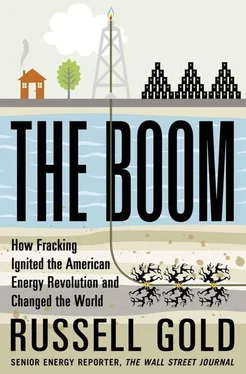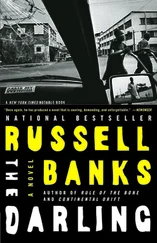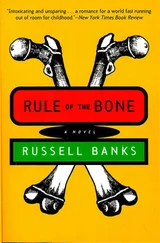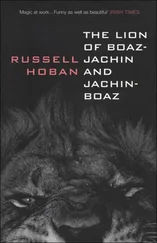History is full of odd ironies. The birth of shale gas is no exception. An environmentally minded oilman, George Mitchell, pioneered a way of cracking open rocks with water and chemicals that would come to embody one of the greatest environmental fears of the twenty-first century. And a right-wing oilman, Aubrey McClendon, would become an outspoken prophet for an abundant, low-carbon source of energy.
———
Not long after Chesapeake inquired about leasing the Farm, my father spent a day driving around to visit neighbors and discovered that many had signed leases already. The reality sunk in. Future drilling locations surrounded the Farm. “We believed they would go under our property and get the gas anyway,” he told me later. It is an old fear. At the beginning of his classic novel Oil! , Upton Sinclair captured how the industry played on this worry. “Take it from me as an oilman,” the budding tycoon J. Arnold Ross tells a group of neighbors. “There ain’t a-goin’ to be many gushers here at Prospect Hill; the pressure under the ground will soon let up, and it’ll be them that get their wells down first that’ll get the oil.” This race to drill and drain free-flowing reservoirs was how it worked at the beginning of the twentieth century, but it is no longer the case. Still, the fear remains.
My mother called me again. “It is going to happen, and it is going to be obtrusive,” I said. But it wasn’t necessarily all bad, I added. Gas was a low-carbon energy source. By signing the lease, she was contributing to its growth. Until you sign the lease, you have the upper hand, I told her. They want your land. Craft an agreement that gives you a say over where the wells will be drilled to keep them on the periphery of the property, out of sight. It was possible for the industry to coexist with the land. In 2004 I visited Ted Turner’s ranch in New Mexico’s Sangre de Cristo Mountains. It is a spread so beautiful, it was once considered as a possible national park. Turner allowed gas drilling but wrote a lease that contained stipulations to make sure there was minimal impact. The energy company could bring only so many trucks onto his property at any one time. The wells were camouflaged behind low walls. The company tried four different shades of paint before Turner’s ranch manager settled on one that blended with the ponderosa pines. I suggested that my parents take a similar approach.
The Farm’s owners met in March 2009. “There was the inevitability of change,” my father recalled. “It was coming. All of our neighbors, all of the land around us, had signed. We were really concerned we would get all the negative—the trucks, the noise—and none of the positive stuff: the money.”
My parents and their friends signed the twenty-page lease in October 2009. In January 2011 the Oklahoma City company drilled the Matt 2H well at the cattle-guard gate to the property, fracking it in August. The Farm’s owners had become partners with Aubrey McClendon. Did these left-wingers, now balding and with gray hair, members of the Philadelphia upper middle class, do the right thing? These days, my sons have started going to the Farm every summer with their grandparents. Was the choice to sign the lease going to change the land? Or, by signing the lease and throwing their lot in with fracking, were my parents helping secure a future for their grandchildren filled with low-carbon gas and renewable energy?
There is a story my parents like to tell about the summer of 1973, as they were building the house that has become part of the lore of the land. A truck arrived and unloaded the house on pallets. None of the Philadelphians had any experience with building or hard labor. Three were newly minted lawyers and community organizers. My mother was getting ready to attend medical school. They gamely threw themselves into the job. My father volunteered to handle the wiring. He had taken electric shop in seventh grade, but when a county inspector arrived, he pronounced the wiring out of code. My father had used electrical boxes that were too small. Small bribes were the way to navigate Philadelphia’s bureaucracy, so he figured the Sullivan County inspector wanted a payoff.
As the inspector walked away, my father trotted after him with $50 in his pocket. Rambling, he described how things were done in Philadelphia. The inspector understood the message. “You see those little kids back there?” he said, pointing to a two-year-old boy and a three-year-old girl. “If anything happened to those kids because of the wiring, I would never forgive myself.” The inspector was talking about me and my sister. He walked away, the $50 still in my father’s pocket.
The inspector had the right approach. If you are going to build something, make sure it is safe. He refused to sign the papers until the wiring was done right. My father replaced the electric boxes. A few days later, the inspector approved the job. The United States faces a similar challenge. We are tearing down the old energy order and building a new one, but are we doing it responsibly? Is it enough to be passive consumers of energy, turning on lights and turning up the thermostat, and relying on the energy industry to make sure the electrons and gas molecules are there for us? What does it mean to promote ethical energy production, and how can it be done?
After my folks signed the lease on their land, I struggled with a set of nagging questions as I traveled the country, digital recorder and steno pads in my backpack, talking to people in fracking hot spots. Had my parents made the right choice? Had I given them good advice? Was the nation making a horrible mistake, or were these energy executives ushering in a new era of energy that we can all embrace? Or are they extending the lease on life of fossil fuel, energy that is both wonderful and destructive?
One thing is certain. Nearly every well drilled in the United States is fracked. That’s one hundred wells a day, perhaps even a bit more, year-round. Whether you fear fracking or celebrate it, that’s a lot of holes in the ground.
———
This book is about the ecosystem and inhabitants of the new United States, one that I sometimes call Frackistan. To trace its emergence, I will begin deep underground and follow the path of the hydrocarbon up and out of the rocks. Humans do not create crude oil and natural gas. We gather it from deep underground, where it is created. Any book about fossil fuels must begin with rocks. They are, literally and figuratively, the foundation of the entire story.
Before the rigs are assembled, a company acquires the right to drill a well. This often involves finding who owns the mineral rights. As was the case with my parents, it’s the landowners. But in some cases, the mineral rights have been severed from surface ownership. One person owns the land and someone else owns what’s underneath. This split can be problematic for all involved. The hunt for leases is a central element of the story of modern American energy.
Once leases are signed and wells drilled, the energy molecules enter a labyrinthine system of pipes and machinery built by the energy industry to extract the oil and gas. To begin this journey requires fracking, the violent act of cracking open rocks. Without this initial interaction between humans and rocks, there would be no resurgence of US energy production, no fracking, and no book. I will spend time with the people, beginning more than a century ago, who pioneered fracking. Moving upward, the story becomes about the wells themselves and the freshwater in aquifers near the surface.
Of course, the story doesn’t end at the surface. That is where the energy industry interacts with people: neighbors who live near the wells, government officials, and environmentalists. It is also here that chief executives and corporations set this activity in motion and interact with the Wall Street money machine, without which the wells never would have been drilled. But this is not the end of the journey, and this book will also trace the final step. Eventually the bulk of this energy is burned to create electricity or heat homes. This releases carbon dioxide, which heads upward into the atmosphere and contributes to climate change. All along this path, the book will spend time with many of the inhabitants of this land, many of whom have struggled with the complexities of this new era and have arrived at surprising conclusions.
Читать дальше












